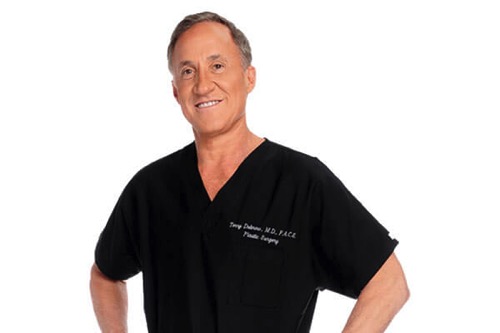What is the Dubrow Diet?
Back in the day, I used to feature a lot of new diets and workouts on the blog and share my thoughts. I still LOVE featuring different classes and formats when I try something new, but as far as diets go, I don’t feel like there’s been a lot of new stuff out lately. I think this is a good thing because maybe it means that people are realizing fad diets don’t often have lasting power, but I’ve noticed a handful of new eating strategies pop up recently. (You can check out my thoughts on Keto here! While it’s not exactly new, it’s stuck around far longer than I expected.)
For today, I thought we could chat about the Dubrow Diet. Please keep in mind that I’m not an RD; just a fairly sane human sharing my thoughts. If you need help with a personalized eating plan, please seek out a local Registered Dietitian.
So, when you think of Dubrow, did this guy come to mind?

Dr. David Dubrow, 50% of the hilarious, and extremely talented Botched duo.
If you thought of him, you would be correct.
The Dubrow Diet was created by Dr. Dubrow and his wife Heather, from Real Housewives of Orange County.

I have to admit that when I see Dr. Dubrow and his wife, I think they look amazing. They look young, healthy, and vibrant. Dr. Dubrow is also a plastic surgeon… so I take that with a grain of salt. (Like when I look at Heather’s gorgeous skin, I don’t think, “Wow, she must eat a ton of fresh fruits and vegetables and drink a lot of water” — I just remember that she gets Botox regularly.)
Here’s how the Dubrow Diet works:
This diet is primarily based on intermittent fasting, which is restricting your food intake to a time window. For example, you’ll fast for 16 hours and eat all of your meals and snacks within an 8-hour window. Intermittent fasting has been around for a very long time, but the research is mixed on the benefits. Some studies have indicated that it can help to reduce inflammation in the body and promote gut health, but it’s also been shown to affect hormone levels, particularly women’s hormones levels negatively.
It’s divided into 3 phases, and each phase is based on a different fasting window. Phase 1 (2-5 days) is 16 hours of fasting and 8 hours of fueling, Phase 2 is based on the following guidelines:
Protein: 2-3 servings per day
Fat: 2-3 servings per day
Nuts, seeds, and snacks: 1 serving per day
Dairy: 1 serving per day
Veggies: 2-3 servings per day
Fruit: 1-2 servings a day
Complex carbs: 1 serving per day
You’ll follow this until you reach your goal while using your fasting window appropriately and Phase 3 follows these same guidelines but is considered maintenance mode. You’ll fast 12 hours a day for 5 days each week, and for 16 hours twice each week. You also get a “cheat meal” each week.

The pros:
– It’s marketed as more of a lifestyle than a diet. I give a little nod to anything that promotes sustainability for the long haul. While the fasting windows are restrictive, it does seem like something that would be fairly easy to adhere to over the long term if you found yourself enjoying it.
– No calorie counting. I like that they focus on serving sizes instead of calorie counting. While I personally count macros, I know that it doesn’t work for a lot of people and that it can be a huge pain to track and measure everything.
The cons:
– It’s kind of confusing. Anyone else feel a little confused by it all? It kind of feels all over the place and I also think it’s interesting that the fasting windows aren’t based on activity levels. For example, you probably shouldn’t do a 16-hour fast the day you’re running a marathon, ya know?
– The focus on appearance instead of health. There’s a lot of “hot bod” commentary in the book, and while that can be an initial lifestyle shift, it will not create long-term motivation. Your health goals MUST be deeper than surface level to have lasting power. If you go into a diet or fitness routine with the goal of having a six-pack, what happens when you get the six-pack? Do you quit? No. You need to keep asking yourself “why” until you can find the true motivation behind your goals. Physical results are just a few of the numerous benefits of making a healthy change.
– The negative impact it could have on hormones. I absolutely think that fasting works as a weight loss tool. At the same time, it does make me raise my eyebrows a little when it’s used as a blanket recommendation because, for some women, it can have a huge negative impact on hormones. This is a really informative article about how fasting can affect our sex hormones, thyroid, and cortisol. It works really well for some people, and not well at all for others.
So, tell me friends: are there any new diets or eating strategies you’ve seen lately? If you could describe your diet in one word, what would it be?
xo
Gina
The post What is the Dubrow Diet? appeared first on The Fitnessista.
from The Fitnessista https://ift.tt/2UsQVRi
0 comments:
Post a Comment